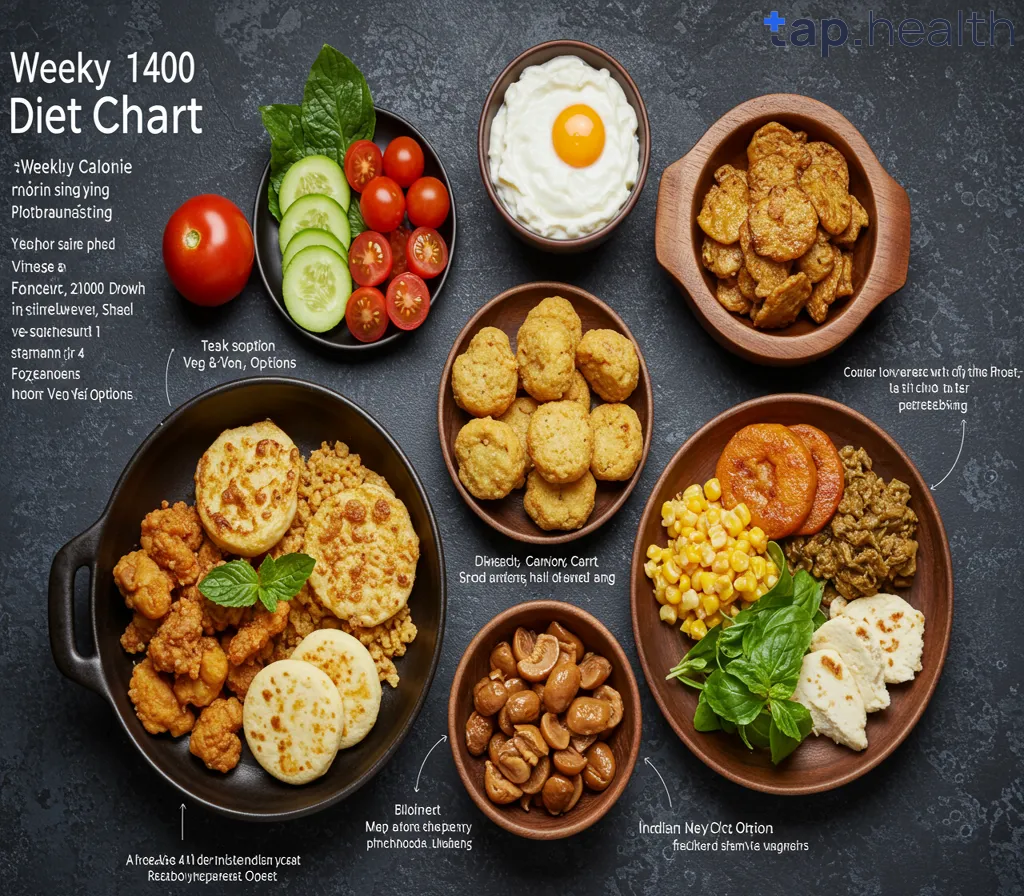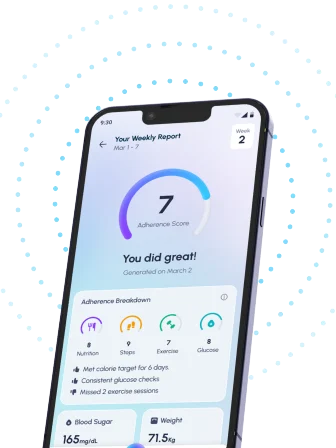Table of Contents
- Belly Fat in Women: A Diabetes Risk Factor?
- Understanding the Link Between Belly Fat and Diabetes in Women
- How Belly Fat Increases Diabetes Risk for Women
- Women’s Health: Belly Fat and Diabetes Prevention Guide
- Reduce Your Risk: Belly Fat and Diabetes in Women
- Frequently Asked Questions
- References
Let’s talk about something many women want to address: belly fat. It’s more than just an aesthetic concern; research increasingly highlights the strong link between excess abdominal fat and an increased risk of developing type 2 diabetes. This is a serious health issue, and understanding the specific challenges women face in this connection is crucial. In this blog post, we’ll delve into Belly Fat and Diabetes: Understanding the Increased Risk for Women, exploring the science behind this connection and offering practical strategies for prevention and management. Are you ready to learn how to protect your health?
Belly Fat in Women: A Diabetes Risk Factor?
Excess belly fat, often referred to as visceral fat, poses a significant health risk for women in India and other tropical countries, particularly concerning the development of type 2 diabetes. This is because visceral fat, stored deep within the abdomen, is metabolically active, releasing inflammatory substances that disrupt insulin function. Insulin resistance, a hallmark of type 2 diabetes, is strongly linked to increased abdominal fat. Women, especially those in regions with high rates of sedentary lifestyles and diets rich in refined carbohydrates, are particularly vulnerable.
Understanding the Link Between Belly Fat and Diabetes in Women
The connection between abdominal obesity and diabetes risk is complex. Visceral fat’s proximity to vital organs like the liver and pancreas directly impacts their function. This can lead to impaired glucose metabolism, making it harder for the body to regulate blood sugar levels. Furthermore, research suggests women with diabetes face a 40% higher risk of heart disease compared to men with diabetes, highlighting the critical need for proactive health management. This increased risk underscores the importance of addressing belly fat in women with diabetes or those at risk. For a deeper understanding of the relationship between obesity and diabetes, you might find our article on Understanding the Link Between Diabetes and Obesity helpful.
Managing Belly Fat and Reducing Diabetes Risk
In the context of Indian and tropical climates, practical strategies for managing belly fat are crucial. Prioritizing a balanced diet rich in fruits, vegetables, and whole grains, while minimizing processed foods, sugary drinks, and refined carbohydrates, is key. Regular physical activity, adapted to the local climate, is equally vital. This could involve incorporating brisk walking, yoga, or other culturally relevant exercises into daily routines. Seeking guidance from healthcare professionals for personalized dietary and exercise plans tailored to individual needs and regional considerations can also greatly improve the chances of success. Remember, proactive measures can significantly reduce the risk of developing diabetes and its associated complications. It’s also important to understand the connection between The Link Between Diabetes and Fatty Liver, as fatty liver disease is often associated with both obesity and diabetes.
Understanding the Link Between Belly Fat and Diabetes in Women
While diabetes prevalence is slightly higher in men (8.9%) than women (7.8%) globally, the impact of belly fat, or visceral fat, on diabetes risk is significant and particularly concerning for women in India and tropical countries. This is because women often experience different metabolic patterns and hormonal influences compared to men. The accumulation of excess fat around the abdomen increases insulin resistance, a key factor in the development of type 2 diabetes. This means the body’s cells become less responsive to insulin, leading to higher blood sugar levels.
The Dangers of Visceral Fat
Visceral fat, unlike subcutaneous fat (found just under the skin), is metabolically active. It releases inflammatory substances that disrupt insulin function and contribute to other health problems like heart disease. In women, hormonal changes associated with menopause can exacerbate this issue, leading to increased abdominal fat storage and a heightened risk of developing diabetes. This risk is further compounded by lifestyle factors prevalent in many Indian and tropical regions, including dietary habits high in refined carbohydrates and processed foods, coupled with reduced physical activity. Understanding the connection between weight loss and improved blood sugar control is vital; see our article on Weight Loss and Blood Sugar Levels: Simple Connection Explained for more information.
Protecting Yourself: Actionable Steps
Managing belly fat is crucial for preventing or managing diabetes. For women in India and tropical countries, incorporating culturally relevant strategies is key. This includes focusing on a balanced diet rich in fruits, vegetables, and whole grains, limiting sugary drinks and processed foods, and engaging in regular physical activity appropriate to the climate. Consider incorporating traditional practices like yoga or mindful eating to manage stress, another significant factor in insulin resistance. The impact of stress on diabetes is substantial, as explained in How Stress Hormones Affect Diabetes. Regular check-ups with your doctor are vital for early detection and management of diabetes. Taking proactive steps toward a healthier lifestyle can significantly reduce your risk of developing this serious condition.
How Belly Fat Increases Diabetes Risk for Women
The Link Between Abdominal Fat and Diabetes in Women
Carrying excess weight, particularly around the abdomen (visceral fat), significantly increases the risk of developing type 2 diabetes, especially for women. This is because visceral fat is metabolically active; it releases hormones and inflammatory substances that interfere with insulin function. Insulin is crucial for regulating blood sugar levels, and when its effectiveness is impaired, blood glucose rises, leading to diabetes. This risk is exacerbated in women due to hormonal influences and variations in fat distribution compared to men. Studies show a strong correlation between increased waist circumference and insulin resistance, a precursor to diabetes.
Lifestyle Factors and Regional Considerations
In Indian and tropical countries, certain dietary habits and lifestyle factors contribute to the accumulation of belly fat and increase diabetes risk. High consumption of sugary drinks is a major culprit. Research indicates that daily consumption of sugary beverages raises diabetes risk by 26%. This is often coupled with a diet high in refined carbohydrates and processed foods, common in many regions. Furthermore, a lack of physical activity and limited access to healthcare further compound the issue. The prevalence of sedentary lifestyles in urban areas, coupled with traditional diets rich in calorie-dense foods, creates a perfect storm for developing insulin resistance and subsequent diabetes. The link between diet and diabetes is significant, and understanding the impact of foods like those found in fast food is crucial.
Taking Control: Practical Steps for Women
Reducing belly fat is crucial for mitigating the risk of type 2 diabetes. Focus on incorporating regular physical activity, even moderate exercise like brisk walking, into your daily routine. Prioritize a balanced diet rich in fruits, vegetables, and whole grains while minimizing sugary drinks and processed foods. Making gradual, sustainable changes to your diet and lifestyle will significantly improve your metabolic health and lower your risk of developing diabetes. Consult with a healthcare professional or a registered dietitian for personalized advice tailored to your specific needs and cultural context. Taking proactive steps today will safeguard your long-term health and well-being. It’s also important to note that while diabetes increases certain health risks, as explored in this article on diabetes and cancer, focusing on preventative measures for diabetes remains key.
Women’s Health: Belly Fat and Diabetes Prevention Guide
Understanding the Link Between Belly Fat and Diabetes in Women
Carrying excess weight, particularly around the abdomen (visceral fat), significantly increases the risk of developing type 2 diabetes, especially for women in India and other tropical countries. This is concerning given that 61% of people with diabetes are between 20-64 years old, a crucial period for women’s health and productivity. Women often experience different metabolic processes compared to men, making them potentially more susceptible to the negative effects of belly fat. Factors like hormonal changes and cultural dietary habits in these regions can exacerbate the problem.
Practical Steps for Prevention
Managing belly fat is key to reducing your diabetes risk. This involves a holistic approach. Prioritize a balanced diet rich in fruits, vegetables, and whole grains, while limiting processed foods, sugary drinks, and refined carbohydrates prevalent in many Indian and tropical diets. For specific dietary guidance, check out our Pre Diabetic Diet Chart: Simple Plans to Prevent Diabetes. Regular physical activity, aiming for at least 150 minutes of moderate-intensity exercise per week, is equally vital. This can include activities easily integrated into daily life like walking, cycling, or yoga. Even small changes can make a big difference.
Seeking Support & Cultural Considerations
In many Indian and tropical communities, family support plays a crucial role in health management. Discuss your health goals with family and friends, seeking their encouragement and understanding. Remember to consult with a healthcare professional for personalized advice, especially if you have a family history of diabetes or other risk factors. They can help you develop a tailored plan that considers your individual circumstances and cultural practices. Early intervention is key; don’t wait until it’s too late. Taking proactive steps towards a healthier lifestyle can significantly reduce your risk of developing type 2 diabetes. For additional strategies, see our guide on 10 Proven Tips for Effective Diabetes Management.
Reduce Your Risk: Belly Fat and Diabetes in Women
Understanding the Link Between Belly Fat and Diabetes in Indian and Tropical Climates
Carrying excess weight, particularly around the abdomen (visceral fat), significantly increases a woman’s risk of developing type 2 diabetes. This is especially pertinent in Indian and tropical countries where lifestyle factors and dietary habits can contribute to higher rates of obesity and insulin resistance. The alarming statistic that children born to mothers with gestational diabetes are 7 times more likely to develop Type 2 diabetes later in life underscores the importance of proactive health management. This inherited predisposition highlights the need for women in these regions to prioritize weight management and healthy lifestyle choices.
Practical Steps to Reduce Your Risk
Managing belly fat is crucial. Incorporating regular physical activity tailored to the tropical climate, such as early morning or evening walks or yoga, is essential. Focus on a balanced diet rich in fruits, vegetables, and whole grains, while limiting processed foods, sugary drinks, and refined carbohydrates common in many Indian and tropical cuisines. Consult a nutritionist or healthcare professional to create a personalized diet plan suitable for your lifestyle and region. Consider incorporating traditional Indian spices known for their anti-inflammatory and blood-sugar regulating properties.
Taking Control of Your Health
Regular health checkups, including blood glucose and lipid profile tests, are vital for early detection and intervention. Early diagnosis is key to preventing or delaying the onset of diabetes and its complications. Remember, proactive lifestyle modifications can dramatically reduce your risk of developing type 2 diabetes and safeguard your future health and the health of your children. Consult your doctor or a qualified healthcare professional to discuss a personalized plan. For more information on managing long-term complications, see our article on How to Prevent Long-Term Complications of Diabetes: Easy Tips. It’s also important to understand the link between diabetes and heart health; learn more in our article, Protect Your Heart from Diabetes: 5 Essential Steps.
Frequently Asked Questions on Belly Fat Diabetes Risk in Women
Q1. What is the link between belly fat and type 2 diabetes in women?
Excess abdominal fat, specifically visceral fat, releases inflammatory substances that disrupt insulin function, leading to insulin resistance and increasing the risk of type 2 diabetes. This risk is heightened in women, especially in tropical countries like India, due to hormonal factors and lifestyle influences.
Q2. How can I reduce my risk of developing type 2 diabetes related to belly fat?
A balanced diet rich in fruits, vegetables, and whole grains, combined with regular physical activity appropriate for your climate, is crucial. Early detection through regular health checkups and consulting healthcare professionals are also vital.
Q3. Why are women, particularly in tropical countries, more vulnerable to this risk?
Women are more susceptible due to hormonal influences and common lifestyle factors in these regions, such as sedentary behavior and diets high in refined carbohydrates.
Q4. What are some practical steps I can take to manage my belly fat and reduce my diabetes risk?
Focus on a healthy diet featuring plenty of fruits, vegetables, and whole grains, while minimizing refined carbohydrates. Incorporate regular physical activity into your routine. Seek guidance from healthcare professionals to create a personalized plan.
Q5. Besides diet and exercise, what other factors should I consider to reduce my risk?
Regular health checkups are important for early detection. Additionally, incorporating cultural considerations and seeking family support can significantly improve the effectiveness of personalized prevention strategies. Addressing heart disease risk, often associated with diabetes, is also crucial.
References
- Electronic Health Records-Based Data-Driven Diabetes Knowledge Unveiling and Risk Prognosis : https://arxiv.org/pdf/2412.03961
- Towards Transparent and Accurate Diabetes Prediction Using Machine Learning and Explainable Artificial Intelligence : https://arxiv.org/pdf/2501.18071




